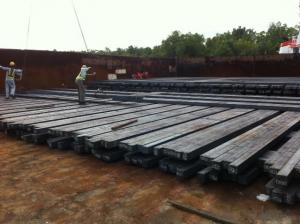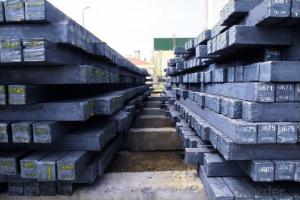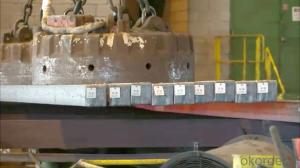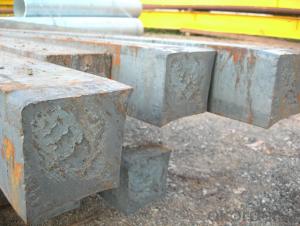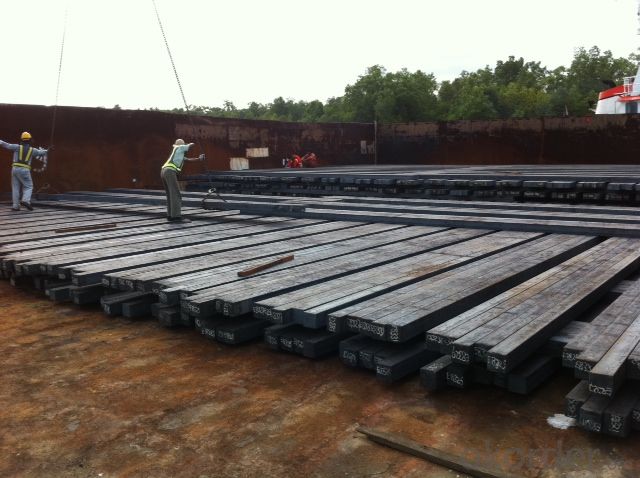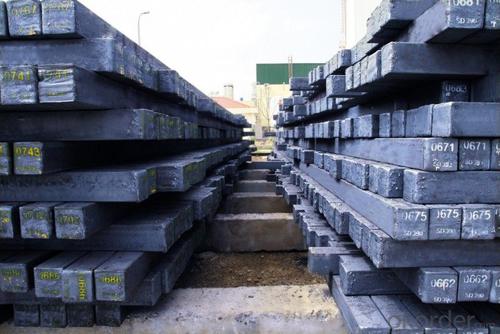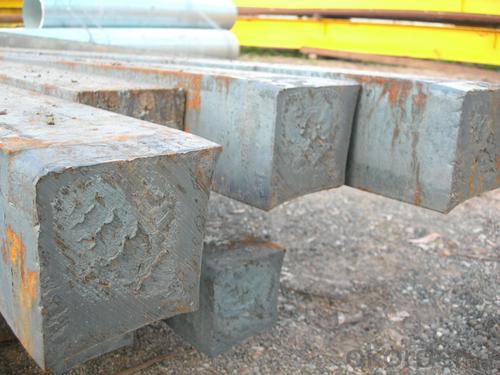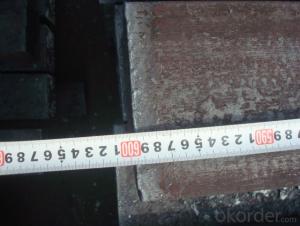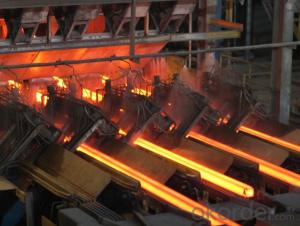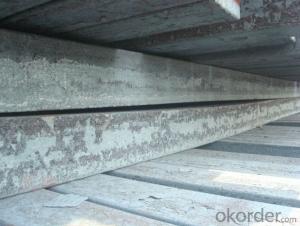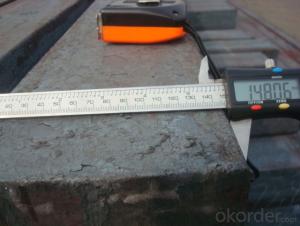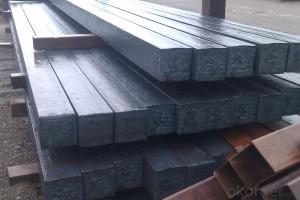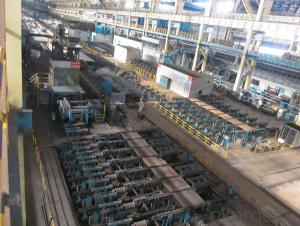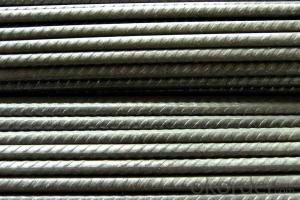Prime quality square alloy steel billet 150mm Q235
- Loading Port:
- Tianjin
- Payment Terms:
- TT OR LC
- Min Order Qty:
- 100 m.t.
- Supply Capability:
- 10000 m.t./month
OKorder Service Pledge
OKorder Financial Service
You Might Also Like
Structure of Prime quality square alloy steel billet 150mm Q235
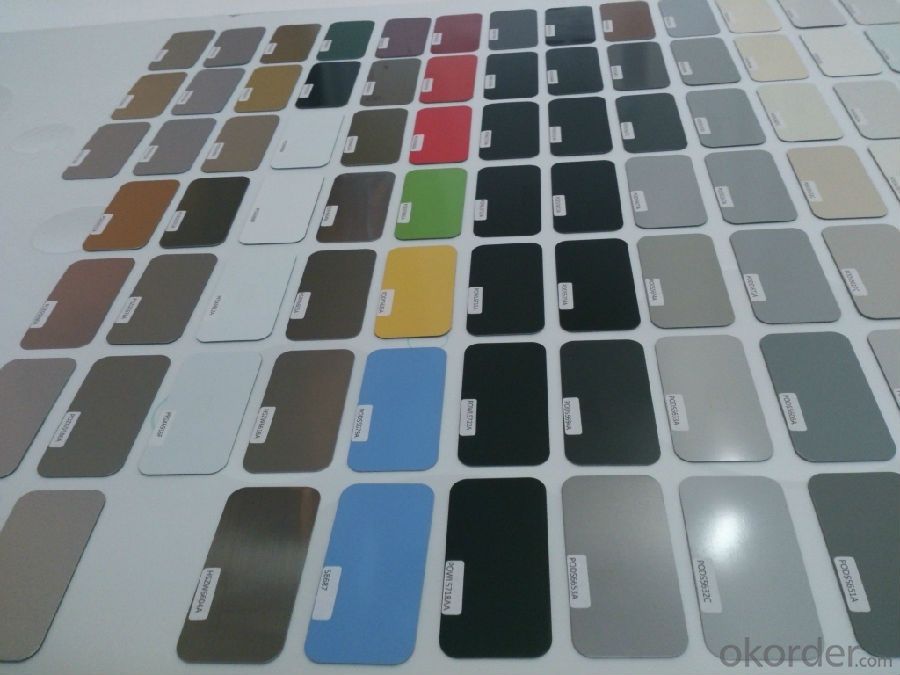
Description of Prime quality square alloy steel billet 150mm Q235
1. Prepainted steel coil is coated with organic layer, which provides higher anti-corrosion property and a longer lifespan than that of galvanized or galvalume steel sheets.
2. The base metals for prepainted steel coil consist of cold rolled, HDGI Steel, electro-galvanized and hot-dip alu-zinc coated steel. The finish coats of prepainted steel coil can be classified into groups as follows: polyester, silicon modified polyesters, polyvinylidene fluoride, high-durability polyester, etc.
3. The production process has evolved from one-coating-and-one-baking to double-coating-and-double-baking, and even three-coating-and-three-baking.
4. The color of the prepainted steel coil has a very wide selection, like orange, cream-colored, dark sky blue, sea blue, bright red, brick red, ivory white, porcelain blue, etc.
5. The prepainted steel coils can also be classified into groups by their surface textures, namely regular prepainted sheets, embossed sheets and printed sheets.

Main Feature of Prime quality square alloy steel billet 150mm Q235
Uncoated CR steel sheet
With the features of in line with the international highest standards in demension and shape, excellent surface finish and properties, the products are mainly used in home appliance and automobile industries.
Galvanized steel sheet(include HDG and EG)
With the features of good corrosion resistance, the products are mainly used in automobile, home appliance, electronics, building and machinery manufacture industries, etc.
Precoated steel sheet
With the features of enviromental protection and good processablility, long lasting surface durability, rich in colors, the products are maily used in building, home appliance and furniture industries, etc.
Applications of Prime quality square alloy steel billet 150mm Q235
Construction
Manufacture anticorrosion, industrial and civil architecture roof boarding, roof grille
Light industries
Home appliance's case, civil chimney, kitchen utensils
Auto industry
Corrosion resistant parts of cars
Agriculture
Food storage, meat and aquatic products' freezing and processing equipment
Commerce
Equipments to store and transport materials, and packing implements
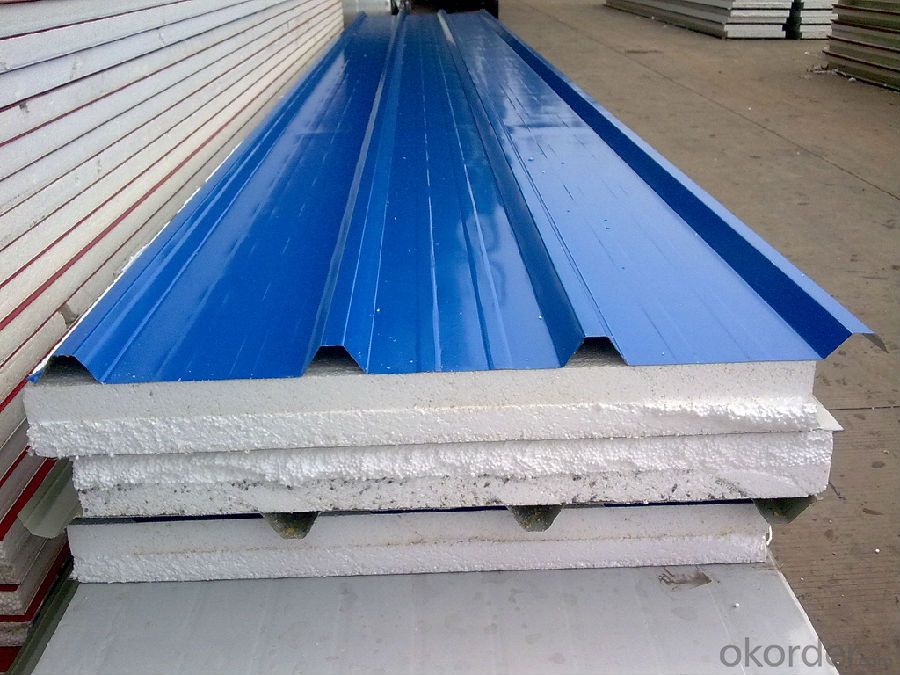
Specifications of Prime quality square alloy steel billet 150mm Q235
Product | Prime quality square alloy steel billet 150mm Q235 |
Material Grade | SGCC / SGCH / DX51D+AZ, etc |
Thickness | 0.6-3.0mm |
Width | 500-1500mm |
Tolerance | Thickness: +/-0.02mm , Width:+/-2mm |
Zinc-coating | Z30-150g/m2 |
Technique | Raw material: Hot rolled steel coil --> Cold rolled_>hot dipped galvalume |
Surface | Dried, Chromated, Unoiled |
Spangle | Regular spangle , small spangle, zero spangle |
ID | 508MM 610MM |
Coil weight | 1-25MT |
Export package | Cardboard inner sleeves, Waterproof paper, galvanized steel covered and steel strip packed |
FAQ of Prime quality square alloy steel billet 150mm Q235
We have organized several common questions for our clients,may help you sincerely:
1. How Can I Visit There?
Our company is located in Tianjin City, China, near Beijing. You can fly to Tianjin Airport Directly. All our clients, from home or aboard, are warmly welcome to visit us!
2. How Can I Get Some Sample?
We are honored to offer you sample.
3. Why choose CNBM?
Our delivery time about 15-20days for standard sizes, if you have other requirements like hardness, quanity and width ,it is about 20-40days. But don't worry we also try our best for the delivery time ,because time longer and our cost is higher.
- Q: What is the role of steel billets in the manufacturing of conveyor systems?
- Steel billets play a crucial role in the manufacturing of conveyor systems. These billets serve as the raw material for the production of various components and parts that make up the conveyor system. Firstly, steel billets are used to create the framework and structure of the conveyor system. They are shaped and cut to form the main frame, supports, and other structural elements that provide stability and strength to the entire system. The high strength and durability of steel make it an ideal material for this purpose, ensuring that the conveyor system can withstand heavy loads and operate efficiently. Secondly, steel billets are utilized in the production of rollers and pulleys, which are essential components of conveyor systems. These rollers and pulleys are responsible for guiding and moving the conveyor belt, enabling the smooth and continuous flow of materials. Steel billets are forged and machined to create these components, ensuring their reliability and longevity even under demanding working conditions. Additionally, steel billets are also used to manufacture various brackets, connectors, and fasteners that hold the different parts of the conveyor system together. These components provide the necessary connections and attachments, ensuring the proper assembly and functioning of the conveyor system. Furthermore, steel billets can be molded and shaped into customized parts as per the specific requirements of the conveyor system. This flexibility allows conveyor manufacturers to design and produce conveyor systems that are tailored to the unique needs of different industries and applications. In summary, steel billets are integral to the manufacturing of conveyor systems as they provide the raw material for the construction of the system's framework, rollers, pulleys, brackets, connectors, and other components. Their high strength, durability, and flexibility make steel billets an essential ingredient in creating reliable and efficient conveyor systems.
- Q: How are steel billets used in the manufacturing of wire rods?
- Steel billets are an integral part of the manufacturing process for wire rods. These billets, which are essentially semi-finished steel products, serve as the raw material for producing wire rods. The first step in the manufacturing process involves heating the steel billets to a high temperature in a furnace. This process, known as heating or re-heating, helps to soften the steel and make it more malleable. Once the billets are heated, they are then passed through a series of rolling mills. In these mills, the billets are subjected to intense pressure and are gradually shaped into wire rod form. The rolling process elongates the steel billets and reduces their diameter to the desired size. After the initial rolling, the wire rods undergo further processing to enhance their strength, surface finish, and dimensional accuracy. This may involve various techniques such as cooling, heat treatment, and surface conditioning. Finally, the wire rods are cut into specific lengths and undergo quality control checks to ensure that they meet the required standards. They are then ready to be used in various applications such as construction, automotive, and electrical industries. In summary, steel billets play a crucial role in the manufacturing of wire rods. They are heated, rolled, and processed to create wire rods of different sizes and properties. These wire rods are then used in a wide range of industries, making them an essential component in the manufacturing sector.
- Q: Can steel billets be forged into complex shapes?
- Yes, steel billets can be forged into complex shapes. The forging process involves heating the steel billet to a specific temperature, typically above its recrystallization temperature, and then applying pressure to shape it into the desired form. This can be done using various forging techniques such as open die forging, closed die forging, or impression die forging. Steel is a highly malleable material, which means it can be easily shaped and deformed under heat and pressure. This property allows steel billets to be forged into intricate and complex shapes, including gears, turbine blades, automotive parts, and many other components used in various industries. The forging process not only shapes the steel billet but also improves its mechanical properties, making it stronger and more durable. Additionally, the forged steel has a refined grain structure, which enhances its toughness and resistance to fatigue and cracking. However, forging complex shapes from steel billets requires skilled craftsmanship and specialized equipment. The process may involve multiple steps, including pre-forming, rough forging, and finish forging, to achieve the desired shape and dimensions. Computer-aided design (CAD) and computer-aided manufacturing (CAM) technologies are often used to optimize the forging process and ensure accurate and precise results. In conclusion, steel billets can indeed be forged into complex shapes. The forging process harnesses the malleability of steel and transforms it into intricate components with improved mechanical properties.
- Q: How are steel billets stored?
- Steel billets are typically stored in a controlled environment to protect them from corrosion and other damages. The storage method varies depending on the size and quantity of the billets, as well as the specific needs of the steel manufacturer. One common method of storing steel billets is to stack them horizontally on a flat surface. This can be done on a concrete floor or on steel racks designed for this purpose. The billets are usually placed in rows and columns, with enough space between them to allow for easy access and inspection. In order to prevent corrosion, the billets are often coated with a protective layer, such as oil or rust inhibitors, before being stored. Additionally, the storage area may be equipped with dehumidifiers or climate control systems to maintain ideal humidity levels and prevent moisture from damaging the steel. For larger quantities of billets, they may be stored vertically in specialized racks or bins. This allows for better space utilization and easier handling with the help of machinery like cranes and forklifts. These vertical storage systems are designed to ensure that the weight of the billets is evenly distributed to prevent any deformation or damage. Regardless of the storage method used, it is crucial to regularly inspect the billets for any signs of damage or deterioration. This includes checking for rust, cracks, or any other defects that may affect the quality of the steel. Proper documentation and inventory management are also important to ensure efficient retrieval and usage of the billets. Overall, steel billets are stored in a manner that prioritizes their protection and preservation. By following appropriate storage practices, steel manufacturers can maintain the quality of the billets and ensure their suitability for subsequent manufacturing processes.
- Q: What are the safety precautions when working with steel billets?
- When working with steel billets, it is important to follow certain safety precautions to prevent any accidents or injuries. Some of the key precautions include: 1. Personal Protective Equipment (PPE): Wear appropriate PPE such as safety goggles, gloves, steel-toe boots, and protective clothing to protect yourself from potential hazards. 2. Proper Handling Techniques: Use proper lifting techniques when moving or transporting steel billets to avoid strain or injuries. Use mechanical aids like cranes or forklifts if necessary. 3. Inspection and Maintenance: Regularly inspect and maintain equipment such as forklifts, cranes, and lifting slings to ensure they are in good working condition and can safely handle the weight and load of the steel billets. 4. Secure Storage: Store steel billets in a secure and designated area to prevent them from falling or rolling over, which can cause serious injuries. 5. Fire Safety: Be aware of fire hazards and ensure that fire extinguishers are readily available in case of emergencies. Proper storage and handling of flammable substances should also be followed. 6. Communication and Signage: Properly communicate and provide clear signage to indicate potential hazards, restricted areas, and safety procedures. 7. Training and Awareness: Provide appropriate training to workers about the potential hazards associated with working with steel billets, as well as the necessary safety procedures to follow. Regularly reinforce safety protocols and encourage a safety-conscious work environment. By following these safety precautions, the risk of accidents or injuries when working with steel billets can be significantly reduced, ensuring a safer work environment for everyone involved.
- Q: What are the main challenges in sourcing steel billets?
- Sourcing steel billets presents several primary challenges. First and foremost, a crucial challenge lies in securing a dependable and consistent supply of high-quality steel billets. Typically, steel billets are obtained from steel mills or manufacturers, necessitating the identification of suppliers capable of consistently meeting the required specifications and standards. This entails conducting extensive research and due diligence to locate reputable and reliable suppliers with a proven track record of producing top-notch billets. Another challenge involves effectively managing the costs and price fluctuations associated with steel billets. Steel prices are influenced by various factors, including global demand, raw material expenses, and market dynamics. Consequently, the price of steel billets can be unstable, impacting procurement decisions and budgets. Sourcing professionals must meticulously monitor market trends and negotiate pricing agreements to ensure optimal value for their organization. Furthermore, logistics and transportation pose challenges when sourcing steel billets. Given their weight and bulk, transporting and managing the logistics of steel billets can be complex. Coordinating deliveries, overseeing shipping schedules, and ensuring timely arrival of the billets can prove challenging, especially when dealing with international suppliers. It is crucial to collaborate closely with reliable logistics partners and implement a robust supply chain management system to overcome these obstacles. Maintaining quality control is another critical aspect of sourcing steel billets. Given the vital role steel plays in various industries, it is imperative to guarantee that the billets meet the required quality standards. This entails conducting quality inspections, reviewing certifications, and performing material testing to verify the integrity and properties of the billets. Regular audits and inspections should be conducted to ensure consistent quality throughout the sourcing process. Lastly, regulatory compliance and trade restrictions present challenges in sourcing steel billets. Import/export regulations, tariffs, and trade barriers can impact the availability and cost of steel billets from specific regions. Sourcing professionals must stay updated on the latest regulations and trade policies to navigate these challenges and ensure compliance with applicable laws. In conclusion, the primary challenges in sourcing steel billets encompass securing a consistent supply of high-quality billets, managing price fluctuations, handling logistics and transportation, maintaining quality control, and complying with regulatory requirements. Overcoming these challenges necessitates careful supplier selection, effective negotiation, robust supply chain management, and staying informed about market trends and regulations.
- Q: What are the different methods of corrosion protection for steel billets?
- There are various methods available for corrosion protection of steel billets. Some of the common methods include: 1. Coating: Applying a protective coating on the surface of steel billets is one of the most effective methods of corrosion protection. This can be achieved through processes such as hot-dip galvanizing, painting, or applying a protective film. The coating acts as a barrier between the steel surface and corrosive elements in the environment, preventing direct contact and reducing the likelihood of corrosion. 2. Cathodic Protection: This method involves creating an electrochemical reaction to protect the steel billets from corrosion. Cathodic protection can be achieved by either using sacrificial anodes or by applying an impressed current. Sacrificial anodes, typically made of zinc or magnesium, are connected to the steel billets, and they corrode sacrificially instead of the steel, thus protecting it. Impressed current systems use an external power source to provide the necessary current to protect the steel. 3. VCI (Volatile Corrosion Inhibitors): VCI is a method that involves using chemicals that release vapors to create a protective layer on the steel surface. These chemicals inhibit the corrosion process by neutralizing the corrosive agents or forming a protective film on the steel surface. VCI can be applied through various methods, such as coating, wrapping, or inserting VCI paper or packets into the packaging of steel billets. 4. Alloying: Introducing alloying elements into the composition of steel billets can significantly improve their corrosion resistance. For example, adding chromium or nickel can enhance the stainless properties of steel, making it more resistant to corrosion. Alloying can be done during the initial production of steel billets or through post-treatment processes. 5. Environmental Control: Controlling the environment in which steel billets are stored or used is also crucial in preventing corrosion. This includes measures such as maintaining proper humidity levels, avoiding exposure to corrosive chemicals or gases, and minimizing contact with water or moisture. By controlling the environment, the likelihood of corrosion can be reduced, thereby protecting the steel billets. It is important to note that the choice of corrosion protection method depends on various factors, including the anticipated level of exposure to corrosive elements, the intended use of the steel billets, and cost considerations. Therefore, it is advisable to consult with corrosion experts or engineers to select the most suitable method for a particular application.
- Q: How are steel billets coated or painted?
- Steel billets can be coated or painted through several methods. One common technique is hot-dip galvanizing, where the billets are immersed in a bath of molten zinc. This process forms a protective zinc coating on the surface of the steel, preventing corrosion. Another method is electroplating, which involves the deposition of a thin layer of metal, such as zinc or nickel, onto the billets using an electric current. Additionally, steel billets can be painted using various coating systems, such as powder coating or liquid paint, to provide a decorative finish or additional protection against rust and environmental factors.
- Q: What are the potential risks associated with steel billet production?
- Steel billet production carries various potential risks. To begin with, the production process involves working with high temperatures and molten metal, which can lead to burns and fire hazards. Operators and workers must exercise caution when handling the equipment and ensure they follow proper safety protocols to prevent accidents. Moreover, the raw materials used in steel billet production, such as iron ore and coal, may contain impurities that can release harmful gases and particulate matter during production. If not controlled and mitigated effectively, these emissions can pose health risks to workers and nearby communities. In addition, the machinery and equipment utilized in steel billet production, including furnaces and rolling mills, can pose mechanical hazards if not adequately maintained or operated. Accidents resulting from equipment malfunctions or material failures can cause injuries to workers and damage to the production facility. Furthermore, the steel industry heavily relies on non-renewable energy sources, such as electricity and fossil fuels, which contribute to greenhouse gas emissions and climate change. It is essential to minimize the environmental impact by implementing energy-efficient practices and adopting cleaner technologies. Lastly, transporting steel billets from the production facility to the next stage in the supply chain presents risks. Proper lifting and securing techniques are necessary to prevent accidents and injuries during loading, unloading, and transportation of the heavy steel billets. To address these risks, steel billet producers must prioritize safety measures. This includes conducting regular equipment inspections, providing proper training for workers, implementing environmental controls, adhering to safety regulations, and continuously improving operational practices.
- Q: How does the composition of steel affect the properties of steel billets?
- The composition of steel plays a crucial role in determining the properties of steel billets. Steel is an alloy composed primarily of iron and carbon, along with small amounts of other elements such as manganese, silicon, and sulfur. The percentage of carbon and the presence of other alloying elements greatly influence the physical and mechanical properties of steel billets. One of the key properties affected by the composition of steel is its strength. Increasing the carbon content in steel enhances its strength, making it suitable for applications requiring high tensile strength, such as construction beams and automotive parts. Additionally, the presence of alloying elements like manganese and silicon can improve the strength and hardness of the steel. The composition of steel also affects its ductility and toughness. Ductility refers to the ability of steel to deform under tensile stress without fracturing, while toughness refers to its ability to withstand impact and resist fracture. Higher carbon content tends to reduce ductility and toughness, making the steel more brittle. Thus, for applications requiring good ductility and toughness, lower carbon content and the addition of alloying elements like nickel, chromium, and molybdenum are preferred. Corrosion resistance is another property influenced by the composition of steel. The addition of elements such as chromium and nickel can significantly enhance the steel's resistance to corrosion, making it suitable for applications in harsh environments or exposed to corrosive substances like seawater. Stainless steel, for example, contains a high percentage of chromium, which forms a protective oxide layer on the surface, preventing corrosion. The composition of steel also affects its machinability and weldability. Higher carbon content may result in reduced machinability due to increased hardness, while alloying elements like sulfur and phosphorus can improve machinability. Similarly, the presence of certain elements can affect the weldability of steel, as some elements may cause cracking or other defects during welding. In summary, the composition of steel billets has a significant impact on their properties. The percentage of carbon, along with the presence of other alloying elements, influences the strength, ductility, toughness, corrosion resistance, machinability, and weldability of steel. Therefore, careful consideration of the desired properties and appropriate selection of steel composition is essential in various industrial applications.
Send your message to us
Prime quality square alloy steel billet 150mm Q235
- Loading Port:
- Tianjin
- Payment Terms:
- TT OR LC
- Min Order Qty:
- 100 m.t.
- Supply Capability:
- 10000 m.t./month
OKorder Service Pledge
OKorder Financial Service
Similar products
Hot products
Hot Searches
Related keywords
